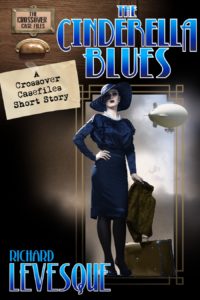Searching for John Shufelt, Part 2
Last time, I started the story of how I dug into my wife’s roots and ended up figuring out what happened to her great-grandmother but then found myself with another mystery on my hands: her great-great-grandfather, John Shufelt, about whom I could find almost no information.
The thing about Mr. Shufelt that bothered me was that it seemed I really should have been able to find something. I had his wife’s death certificate from 1916 in which she was identified as a widow, and I had her 1900 and 1910 census data where there was no reference to a Mr. Shufelt. The Shufelt children’s entries in those census records indicated that their father was born in Canada. I knew the Shufelts were married in 1870, but that was all I had.
So…John Shufelt had been born in Canada, married in Illinois in 1870, and died sometime before 1900 after fathering three children. As I mentioned in my last post, the State of Illinois provides a lot of online genealogical material, and between their data, what I found at Ancestry.com and the online records at FamilySearch.org, I should have been able to find something. But there was nothing. I was on the hunt.
Somewhere along the way, I reached out to a research volunteer for some help, and she noticed that there was a John Shufelt, born in Canada, who had served in the Illinois cavalry during the Civil War. Could this be the same person? What were the chances that there were two John Shufelts, both born in Canada, living in Illinois in the 1860s? I wanted to say the chances were slim, that this was my John Shufelt, but I had learned with my search for Helen Hawley not to fall for easy answers.
So I kept the soldier version separate from the Shufelt I knew about. The interesting thing about this soldier, though, was that he had been a paid “volunteer” who joined up with the cavalry just a month before the war ended. Was there something shady about this guy, I wondered, and might such shadiness have anything to do with the fact that my John Shufelt had effectively disappeared from the record books sometime before 1900?
Every now and then, I would run a Google search for him. When Google started including patents in their search results, I found a patent held by John H. Shufelt for a road cart, and another for a floor polisher. This Shufelt lived in Joliet, Illinois, where his wife, Ellen, also lived. That was a solid lead. The patents, however, were from the 1880s, so no solid answers to what had happened to him. I also found phone directories identifying him living in Joliet, some indicating he was a carriage painter.
A 1900 census record showed a John Shufelt living in Santa Fe, New Mexico, with his occupation listed as “gold miner.” That was intriguing. Could this be my John Shufelt? Might he have left his family to try and strike it rich in New Mexico, maybe dying there and never making it back to Illinois? Again, it was a Romantic twist on the mystery, and I resisted buying into it.
But then I discovered another clue while doing more research on the Civil War veteran. That John Shufelt died in 1917. So, he couldn’t be my John Shufelt, whose wife had identified as a widow from at least 1900 onward. However, this John Shufelt had died in Santa Fe and was buried in the military cemetery there. It only seemed logical that this would be the same Shufelt who’d been there mining gold in 1900.

John Shufelt’s Gold Separator, 1896
And then I found one more piece: a patent for a gold separator, filed in 1896 by John Shufelt of Dolores, New Mexico, a little mining town near Santa Fe.
I had been hesitant about linking the Civil War John Shufelt to my inventor John Shufelt. But what were the chances that the veteran who’d gone to the gold mines of New Mexico would have the same name as my John Shufelt, would also be from Canada, and would be an inventor inclined to file patents on his ideas? It had to be the same guy.
But what about his wife’s identification as widow? One genealogical helper I’d corresponded with over the years had suggested that if the marriage had fallen apart, it might have been embarrassing for Mrs. Shufelt, who might have preferred to identify as widowed rather than divorced or separated. The gold separator patent told me this might very well have been the case.
Still, all I had were strong probabilities, no hard evidence, no official records linking the two versions of John Shufelt. I had two more things to try: one fellow searcher suggested I re-post my queries to the various message boards I’d visited over the years; the other possibility was to mail away to the National Archives for John Shufelt’s military records. The first option was free, but I’d tried that many times over the years. The second option had a $75 price tag, and if it turned out to be two different people I was looking at, it would be $75 wasted. But it was worth a shot, so I took it.
Strangely enough, both options panned out. A few days after posting about John Shufelt on the genealogy sites, I heard from a man who turned out to be a distant cousin of my wife’s. John Shufelt’s son had been this man’s grandfather, and he’d lived to a ripe old age. I learned that John Shufelt left his home in 1889, telling his family he was going west to search for ricolite, a mineral that he had used for carving. No one had ever heard from him again, and the family had always assumed he’d been “killed by Indians” in his travels. So, it turned out that his wife called herself a widow because that made the most sense. She probably spent the next 25 years wondering if he’d show up one day.
It also turned out that Shufelt was quite the artist, having a reputation for painting the stripes on carriages and the spokes of carriage wheels. There were stories in the family of a ricolite Parthenon he’d carved as well as other things. I told my wife’s cousin about my theories concerning the Santa Fe John Shufelt and promised to share with him whatever I learned from Archives.
When the papers came, I was astounded. It was a thick folder, and right away I knew that the John Shufelt who’d served in the Illinois Cavalry was the same who’d left his family in Illinois, the same inventor and artist, the gold miner and paid army “volunteer.” Most importantly, I knew with certainty that he was my wife’s great-great grandfather, and I was able to contact her distant cousin to share with him and his branch of the family the truth of what had happened to the ancestor who’d gone west in 1889 never to be heard from again. The papers showed that the Santa Fe John Shufelt had come from Joliet and that he was married to a woman named Ellen.
Apparently, while serving in the war, John had been close to some explosions, and his hearing was impaired for the rest of his life, the damage only getting worse as he grew older so he was essentially deaf by the time of his death. He applied for his pension from the military, but there was some dispute as to his age: he claimed to have been born in 1835, but the army showed his birth as 1844, and they would not compensate him at the rate he felt he was entitled to. A long series of letters back and forth was included in the package from the archives giving clues to his life in Santa Fe.

Someday, I think I’ll write a book about him, fictionalizing the story but sticking to most of the details. He led a fascinating life and may not have been that honorable a fellow.
It was a wonderful feeling to finally nail the man down and answer some questions about him. The best part was being able to solve the mystery that had plagued his son and his descendents.
As for me, I’ve finally cured myself of the genealogy bug, no new mysteries replaced the search for John Shufelt. I haven’t nailed down his birth, but I’ve decided not to try. I’ve had enough of these kinds of mysteries.
For now, anyway.
Thanks for reading.







One Response
[…] More on that next time. […]
Comments are closed.